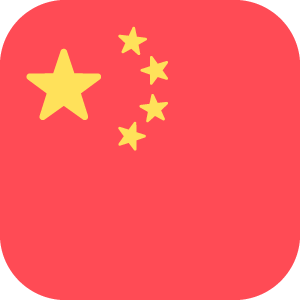
Speaking of business cards, what comes to your mind first? Businessman, conference or a way to distinguish successful people from others? If you do think so, you will no doubt be teased when you talk about it in front of Japanese people.
Japanese business card, also is called as meishi (名刺), is basically a ceremonial tool to exchange information with counter-party and show respects at the same time in business. What you can see from meishi is generally name, contact address, name of organization.
But why is meishi important to Japanese and what does meishi mean to Japanese people? From the prospective of Japanese people, meishi itself is literally the face of the businessperson. In other words, meishi includes information to identify the other person in a literal and figurative sense, and it demands the receiver to treat it with the utmost respect because it is a physical extension of the person.
Although meishi generally refers to Japanese business card, it is not just limited to business people.

This meishi is designed for mothers who have kids. As you can see from the meishi above, the name of the mother and her daughter as well as contact address are written on it with photos at the right of meishi. Also, a brief self-introduction of her is just below the contact address.
子供名刺

This meishi is for kids who study at primary school. Her name, school, date of birth and favorite things are also written on it. And pay attention here, her mother’s name and number are also indispensable.
大学生名刺

This meishi is for university students who want to attend job interviews. This person’s name, school, and contact address are written to show the brief information of the person.
Apart from these three exceptions, there are also other kinds of meishi which are used by others, proving meishi is not just a business card for Japanese, but a medium to share information and communicate with others.
As we already have talked about contents of meishi, what else is of great help to reflect the importance of meishi?
Logo(ロゴ)

Speaking of Logo, design is not the only thing companies focus on, but by reading the logo, the receiver can get information about service that the company offers as well as meaning of the logo itself.
Basically, there are several cases that logos exhibit
1.Storytelling

Can you guess the meaning of this logo?
The answer is the birthday of one founder differs by 6 days from the other.
2. Color
When choosing a color for the logo, picking up a bright color will be a wise choice to make it easier for receivers to remember the logo. On the other hand, light colors are not recognizable enough on meishi. Besides, different colors could have different meanings or symbols which can signalize the features of the company itself. For instance, red represents energetic, warm-hearted and powerful.
3. Font of logos
Different suppliers of logos are using different fonts for logos, checking out if it is of your expectation is vital before choosing the supplier.
4. App Icon
In recent years, as the development of technology, many companies choose to use App Icons as their company logos because it is simple, easy to understand and fashionable like:

From the brief introduction of meishi and its details above, I believe you more or less realize how essential meishi is to Japanese people, but here another question comes, where do they keep it securely?
Meishiire(名刺入れ)

This small card case is called meishiire, which is specially made for meishi. Instead of putting meishi into wallet, this card case can keep a number of meishi without taking up too much space. As for meishiire, you may feel like pockets of pants is the best place to keep it, but oppositely, putting it there is the worst choice due to the possibility to fold the meishi when you sit down, especially back pocket is disrespectful.
Suit pocket is the most ideal place to keep meishiire, because you can take it out easily and there is no need to worry if it may be folded in any case. In extreme cases when you are not wearing suit, briefcase would be the second choice for it.
Meishi, however, is much more important and complicated when it comes to the moment to be given and received.
Before giving meishi, there are several points needed to be kept in mind first.
- Make sure the meishi that you are going to give is not folded or soiled.
- Do not take out meishi directly from pocket or wallet (put at the place where you can immediately take out from your briefcase).
- Do not exchange meishi without business card case.
- Better to stand in front of each other to exchange meishi.
Here you may have a question that who should give meishi first? In Japanese business culture, actually the giver is called as houmonsha (訪問者)=visitor, while the receiver is called as meiue(目上)=client. When the giver gives meishi, it should be turned towards the receiver to make it easy to be read, then look at receiver and say:
わたくし、○○株式会社の○○と申します。(watakushi, … kabushikigaishya no … to moushimasu.)
よろしくお願いいたします。(yoroshiku onegai itashimasu.)
“I am ○○(name) from ○○(name of company),
Nice to meet you.”
Simultaneously, the receiver should use both hands to receive meishi and say:
頂戴いたします。(choudai itashimasu.)
○○さんですね。(…san desu ne.)
わたくし、○○株式会社の○○と申します。(watakushi, … kabushikigaisha no … to moushimasu)
よろしくお願いいたします。(yoroshiku onegai itashimasu.)
“Thanks for your card.
Your name is ○○, I see.
I am ○○(name) from ○○(name of company),
It’s nice to meet you.”
After these two steps, the giver and the receiver will start chatting to know more information about each other.
You may feel that is the end of this, but unfortunately, there is one more thing that you should never forget. As soon as the receiver receives meishi, the primary thing is to look at it carefully, give questions or confirm the information on it, then keep meishi on display for the duration of the meeting.


Nevertheless, when it turns to exchange meishi with each other, both should give and receive at the same time, which is called doujikoukan(同時交換).
In this case, they should use their right hands to give while left hands to receive at the same time, then read the meishi and confirm information with each other.


Based on these information, do you have a better understanding of meishi now? But in fact, these are just a small part of meishi in Japanese culture, and there are more waiting for you to discover and experience by yourself.
Words used in this article
名刺 めいし meishi (business card)
ママ名刺 ままめいし mamameishi (business card for mothers)
子供名刺 こどもめいし kodomo meishi (business card for kids)
大学生名刺 だいがくせいめいし daigakuseimeishi (business card for university students)
名刺入れ めいしいれ meishiire (business card case)
ロゴ rogo (logo)
目上 めうえ meue (higher ranking people)
訪問者 ほうもんしゃ houmonsha (visitor)
同時交換 どうじこうかん doujikoukan (exchange at the same time)

















